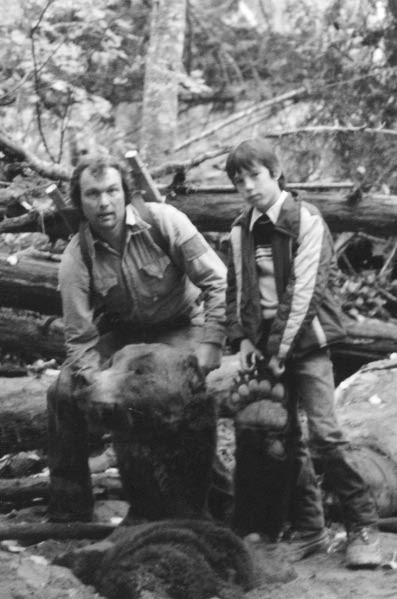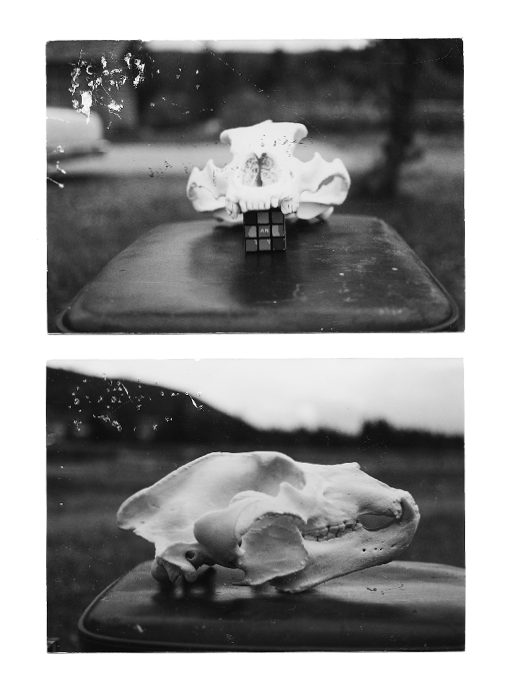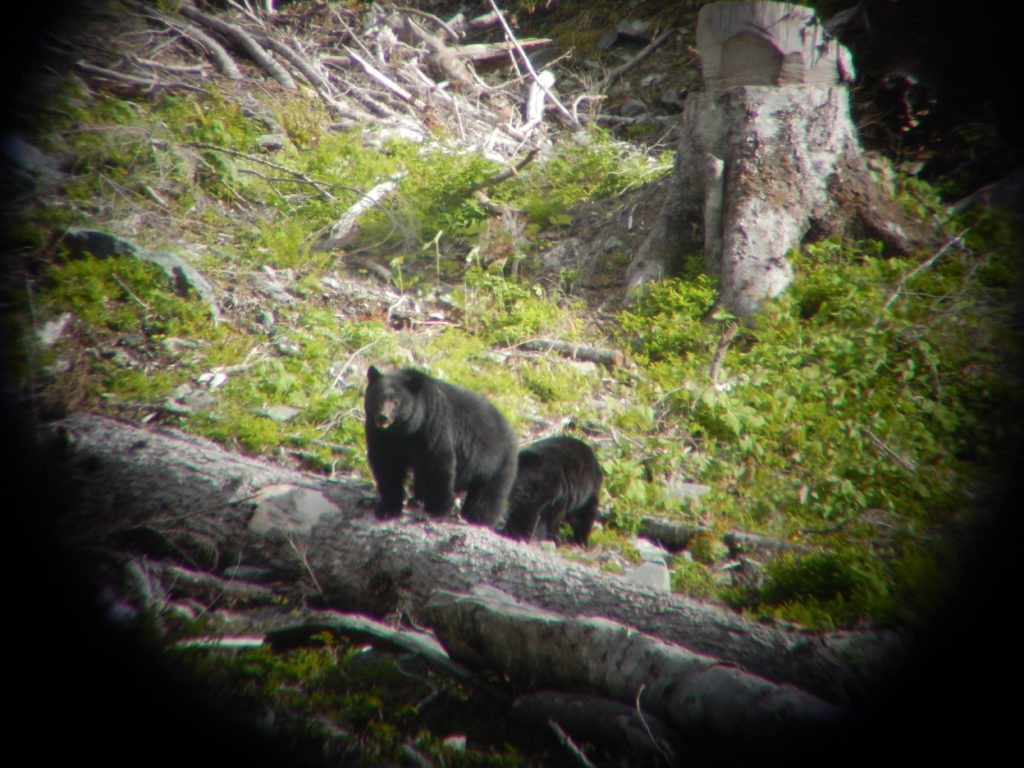As noted in Part 1 of this series, BC is widely regarded as one of, if not the, most desirable big game hunting destinations on the planet. And for good reason. Between the species diversity, high game populations and truly world class opportunities there aren’t many places one can hunt where both the wilderness experience and the trophy potential is without par.
Last month we covered the species that can objectively be said to be BC’s “Big Three” as far as trophy potential: Stone Sheep, Rocky Mountain Goats and Mountain Caribou. There is no other place in North America that produces such a high proportion of Top 50 or Top 100 Boone & Crockett entries as BC does for these three highly sought after big game species.
In Part 2 we’ll dive into the records data on two more species that BC is ranked number one and number two for in terms of trophy genetics, Canadian Moose and Grizzly Bears respectively, and then focus on the “second tier” species that BC is still very well known for. I use the phrase “second tier” here not to diminish the quality of the hunting opportunities but to separate those species where BC is the undisputed king from those species whose trophy book entries are not so BC biased. The records clearly show that when it comes to the species covered here in Part 2, BC is still world class.
This “second tier” list includes Roosevelt Elk, Black Bears and Rocky Mountain Bighorn Sheep. To be clear, that is not to suggest that BC is not a phenomenal destination for a hunt for any one of these big game animals, just that BC does not produce as high a proportion of Top 50 or Top 100 Boone & Crockett class animals as one might think. It is very important to note that if your hunting goals are as focused on the trophy experience as the class of the animal itself then BC is very hard to beat no matter what critter you’re after.
Again, using Boone & Crockett Club’s phenomenal online tool Trophy Search, let’s dig into the data.
Canadian Moose
BC is blessed with an embarrassing diversity of moose habitat and, as per the record book entries, incredible genetics. Other than a small (relatively speaking) area in the extreme Southwestern corner of the province, basically the Greater Vancouver Area, and the entirety of Vancouver Island there aren’t many parts of BC where you can’t find moose. That said, if you’re looking for a world class animal and a world class experience that will take you into some of the most epically beautiful country in this great province there is only one direction you should be considering: North.
In the Top 50 All-Time Canadian Moose entries into the record books, BC has produced just over 50%. Not surprisingly all from the Northern third of the province. Like the species covered in Part 1, there are good opportunities to be had in both the northwestern and northeastern regions but the overwhelming majority of BC’s top bulls come from the northcentral and northwestern areas of the province.
Yet again the Cassiar Mountains make an appearance as the most concentrated area of trophy production, as well as the country around Dease Lake, Telegraph Creek, the Turnagain River and the Kawdy Plateau. The extreme northwestern corner of the province, specifically the area around Atlin, BC and the Tatshenshini River basin has produced some incredible bulls as well. This is wild, remote country and access will be by float plane, horse or jetboat with horses being the preferred mode of transport and hunting style. These are true expedition hunts.
The northeast has also produced some top tier bulls, including the #1 All-Time. In fact, four of the Top 25 entries come from the northeastern region. The area around Pink Mountain and the basins and tributaries of the Muskwa, Prophet, Toad, Sikanni Chief and Halfway rivers are all top-notch moose hunting destinations that have numerous B&C Book entries. As noted in Part 1, access in the northeastern region can be a little easier depending on where you hunt but again expect horses to factor heavily into your trip.
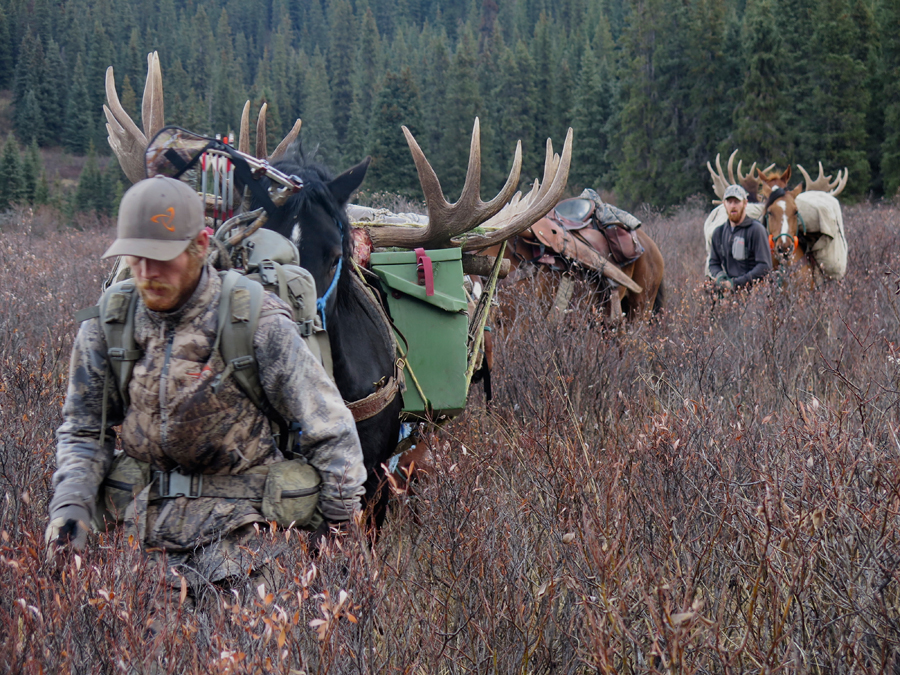
Roosevelt Elk
Roosevelt elk tags are as sought after by BC residents as they are non-residents. Through the province’s limited entry draw system, resident Roosevelt elk hunting pressure is tightly controlled and most BC resident hunters consider drawing this tag a true once in a lifetime opportunity. Given this strict management emphasis, many assume that BC is the top destination for a mature, world class Roosevelt bull. This is not the case.
Oregon has double the record book entries as BC, 200 B&C All-Time entries compared to BC’s 102. California is second at 119 so in reality there is no contest between the top spot and second and third. That said, if we factor in the hunting experience then BC is undoubtedly a great choice as a Roosevelt elk hunt on Vancouver Island or up the inlets dotting the wild and rough southern portion of the Inside Passage is an experience you won’t soon forget.
Despite BC’s third place rank as far as producing the total number of record book bulls, make no mistake, the genetics are top notch with 40% of the Top 50 entries coming from BC, all but one of these from Vancouver Island. The bulk of these bulls have come from the northern half of the Island. This is thick, nasty timber country. Many resident hunters will wear studded logging boots to hunt the steep and often very wet clear cuts these big bulls call home. And as much as hunting clear cuts, or what we in BC call cut blocks, may not sound appealing to some of you, the rainforest is so thick that this is the only way to realistically hunt these giant elk. Given this, a lot of Roosevelt elk hunting will include 4X4 or ATV use to cover as much ground as possible with final stalks being done in steep, leg and ankle breaking terrain. In some cases, boats will be used to access rarely hunted, but logged, inlets.
The country bordering the northern circumference of Strathcona Park, such as Gold River, and the northeastern coastal areas of Campbell River and Sayward have all consistently produced B&C quality bulls. As you head into the northern third of the Island, the country around Bonanza Lake, Nimpkish Lake and the Tsitika River are good bets with a solid number of entries coming from these remote pockets of Van Isle.
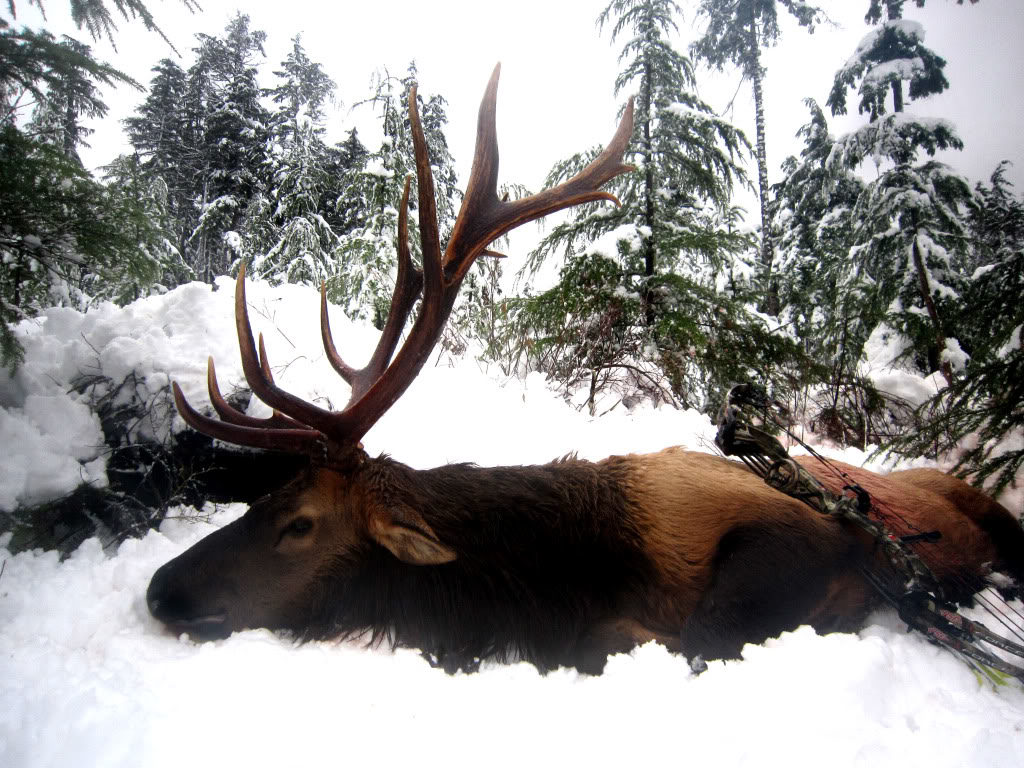
Grizzly Bears
As controversial as so called “trophy” grizzly bear hunting may be, BC has a very healthy, and very tightly managed population of g-bears. Between resident hunters, non-resident hunters and non-hunting related mortalities the annually sustainable grizzly bear harvest is almost always well below what the provincial biologists set as their target. And if we’re talking about mountain grizzly bears, by most accounts the meat is more than worth taking home. Despite what the well-funded and egregiously biased grizzly bear “conservation” organizations try to tell the world grizzly bear hunting is a highly sustainable practice. It’s important to note that Alaskan Brown Bears and Grizzly Bears are considered separate species so for the purposes of this article we’ll be looking at the data on Grizzly Bears.
It’s a tight race between Alaska and BC as far as trophy book entries with 463 and 427 All-Time entries respectively. Here in BC, the area known as the North Coast reigns supreme with the country around Bella Coola producing an incredible 23 entries alone. A little further inland, the country around Anahim Lake and Tatla Lake is also a good bet and has produced some very big bears.
To the south of these areas, the very remote Owikeno Lake country, Klinaklini River basin and Knight Inlet have also produced a solid number of B&C entries. Moving north, Meziadin Lake, the Stikine River basin, the Cassiar Mountains, Toad River (in the northeast) and Iskut River are also top producing g-bear hunting destinations. In the extreme north, the Taku River is a destination that should be on your list. Most of these hunts will be 7 – 10 day expedition style hunts so plan and prepare accordingly.
[column size=one_half position=first ]Photo Credit Boone & Crockett Club
Black Bears
Like moose, BC is home to an incredible abundance of North America’s most widely distributed large predator. Many hunters wrongly assume that BC is the place to come to hunt big black bears and although there are certainly big bears to be found throughout BC, the records data may surprise you.
As far as the top 5 trophy producing provinces and states are concerned the list, in order, is as follows: Wisconsin, Pennsylvania, Saskatchewan, Alaska, and Manitoba. BC is ranked 12th and does not have a single entry in the Top 100 All-Time. The first B&C record book entry is at #115.
But again, if the hunting experience is as important as the animal itself then BC is still a great bet. The bulk of the bear hunting in BC is spot and stalk, the kind of hunting style most mountain hunters prefer. In many, if not most, of the provinces and states (other than Alaska) in the top 5, hunting will be conducted over baits. There is nothing wrong with this method, in fact it’s often necessary in less mountainous terrain and highly effective to boot, but for the died in the wool mountain hunter spot and stalk bear hunting will be more enjoyable.
It should also be noted that although black bear hunting is very popular in BC, the data may be slightly skewed by the fact that many BC resident hunters don’t bother submitting their bears for record book entry. Because bears are so plentiful, they don’t receive the “special” status of say sheep, elk or goats.
Big bears can be found virtually anywhere in the province. I was personally on a hunt just a few hours from the bustling city of Vancouver where an absolute pumpkin head of a boar was taken that just missed the minimum entry requirements. But if you want to go where the bears are notoriously bigger, and the records book data objectively shows concentrated trophy production the two safest bets are Vancouver Island and the Queen Charlotte Islands or what BC residents refer to as Haida Gwaii. A trip to the QCI is worth the adventure alone as it’s not an easy place to get to and very sparsely populated. It’s a very rugged and wild island in the North Pacific just off the coast at the bottom of the Alaskan panhandle. For those looking for an easier trip logistically speaking, Van Isle is tough to beat. In most cases these hunts will involve splitting time between covering ground via logging roads in 4X4s or ATVs and walking and still hunting old decommissioned forest service roads and putting a stalk on a bear once it’s been spotted.
Bighorn Sheep
BC is home to healthy populations of both Rocky Mountain and California bighorns but because this article is focused on the B&C data that does not separate the two subspecies we’ll not be officially comparing the two bighorn variants. This is another species where the gap between the top three trophy producing states or provinces is immense. Montana holds the nearly inconceivable lead with 800 entries to date. Yes, you read that correctly! Alberta is second with 359 entries and BC pulls up the rear with 141 entries.
Bighorn populations are highly pocketed in BC so the hunting conditions can vary significantly from one area to the next. Depending on your hunting goals and very frankly fitness level you have mixed terrain and hunts to choose from. Although there are certainly some exceptions, such as the Cariboo-Chilcotin sheep ranges and the Fraser River breaks, hunts for California bighorns tend to be a little easier than Rocky Mountain bighorn hunts. For Rocky Mountain bighorns in BC, at some point it’s going to boil down to putting in the very steep and very serious hard yards on your own two feet.
From the standpoint of trophy production, there are two distinct areas to consider. The country around Spences Bridge on the storied Thompson River has produced 10 record book entries to date. This is an area where you’d be contending with some very dedicated and capable resident sheep hunters. It’s relatively close to a few decent sized cities and is a general open season area for residents so this is one of the tougher bighorn hunts to cut a tag on.
For the time and/or money, the East Kootenays are where I’d focus my efforts and resources. This is the far southeastern corner of the province where the nearly impenetrable Rockies form the divide between BC and Alberta. And we all know just how big bighorns get in Canada’s second most westerly province! The mountains surrounding the Elk and Bull River Valleys and the smaller tributaries that feed these two namesakes have produced numerous B&C book entries, over 50 to be specific. Pound for pound, if you’re looking at a trophy bighorn hunt in BC, the East Kootenays are your best bet.
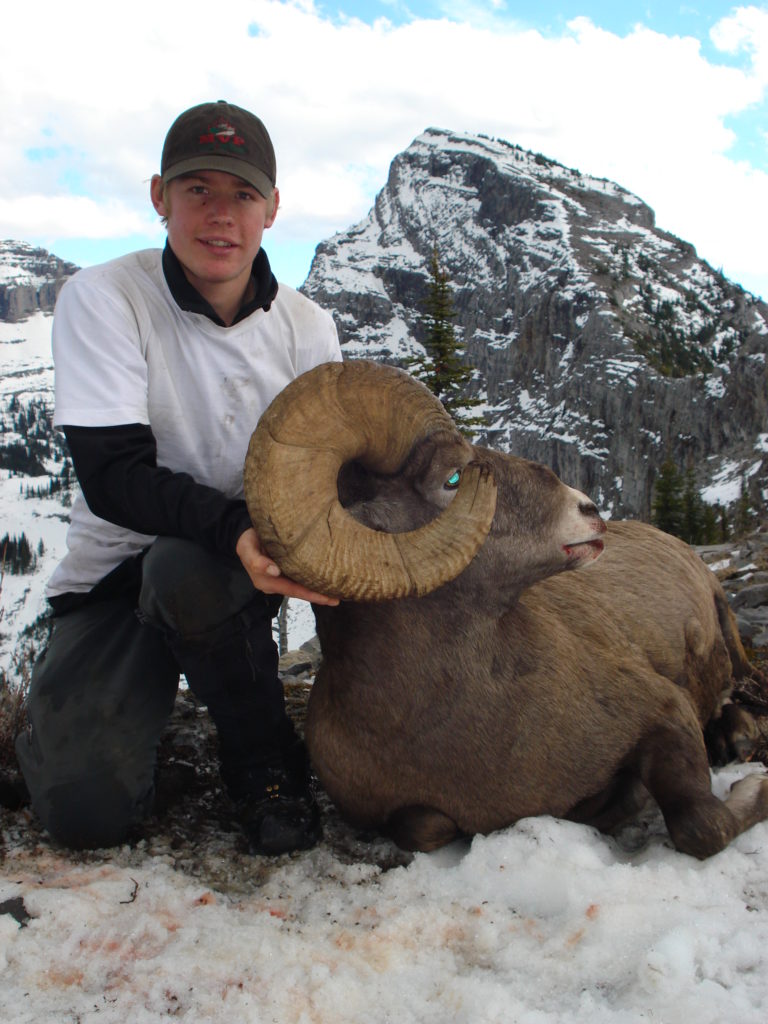
Honorable Mentions
Two very popular species that were omitted from this article are Rocky Mountain Elk and Mule deer. Although BC certainly produces some big elk and deer, the records data clearly show that BC is not a world class elk and mule deer destination. That said, one of the truly unique aspects to both elk and mule deer hunting in BC is you can hunt early season, high alpine mule deer with a rifle as well as bugling, peak rut bull elk with the same. This is one of the only places in North America where that is the case. So, as I’ve noted a few times already, if you’re hunting as much for the experience as you are the age class then a backcountry high alpine mule deer or mid-September elk hunt here in BC is an experience you won’t soon forget. I can virtually guarantee you’ll see a fraction of the hunters you do in some of the better-known elk or mule deer haunts, especially when compared to the lower 48.


